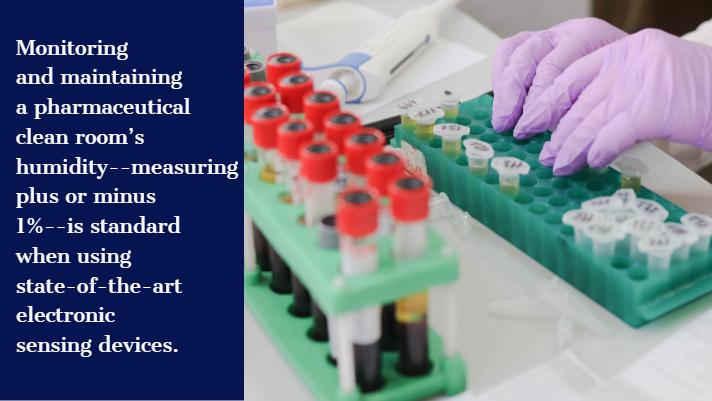
Pharmaceutical clean room standards meet good manufacturing practice (GMP) requirements. Clean room standards do not apply to non-sterilized items; however, for sterilized products, clean rooms are required. Even non-"clean" rooms are well ventilated and filtered. And, monitoring and maintaining a pharmaceutical clean room’s humidity--measuring plus or minus 1%--is standard when using state-of-the-art electronic sensing devices. Let’s look at the specifications of a clean room.
Specifications Of A Clean Room
Clean room have the following three (3) specifications in common.
- Clean rooms, in order to meet clean room standards, have GMP compliant internal surfaces that are “smooth and impervious.” They do not create contamination (e.g., dust, corrosion) nor do the surfaces peel, flake or rust. Clean room surfaces should be accessible. However, these surfaces should not be susceptible to cracking, shattering, or denting. In short, clean room surfaces should be stable areas in which contaminants cannot flourish. Surface materials can range from glass, epoxy-coated plaster board or Dagard made surfaces. GMP surfaces are often designed in a cabinet design with fume hoods to control for chemical purity.
- Airflow. Clean room standards require good airflow. The more “clean” the room needs to be, the more filtered the air. The air in all clean rooms, however, is temperature and humidity controlled. The more “clean” a clean room needs to be, the more air it will use and filter. Clean room air purifying systems deliver fresh and recirculated air through its filtration system, where particulate matter, moisture and gasses are removed.
- Personnel operations. Personnel must be trained in the operation and maintenance of clean space in order to keep clean room standards. Personnel wear clean room or “bunny” suits that help keep contaminants out. There should be strict protocols in place that allow only personnel with clean room credentials to enter. If a guest enters, it must be with trained personnel who are responsible for maintaining the clean room’s integrity. Of course, regular maintenance and cleaning of a clean room and its equipment is mandatory. Air flow filtration monitoring is also of vital importance.
Clean Or Dirty?
Clean rooms, in pharmaceutical applications, especially, should have “clean” and “dirty” corridor design. Dusty products, such as the contents of tablets or capsules, have a high contamination risk. Therefore, dry formulations are made in a clean environment with a negative air pressure differential. Liquid products, on the other hand, attract microorganisms, which will attach to and flourish in a moist or humid environment and need a “dirty” corridor in which to escape to. The clean room’s air, in this case, is positively charged so that air can escape, but “dirty” air outside, in the corridor, cannot enter.
Clean rooms must have GMP quality assurance and GMP quality control standards. Clean room standards include GMP storage conditions to be maintained to strict standards.
